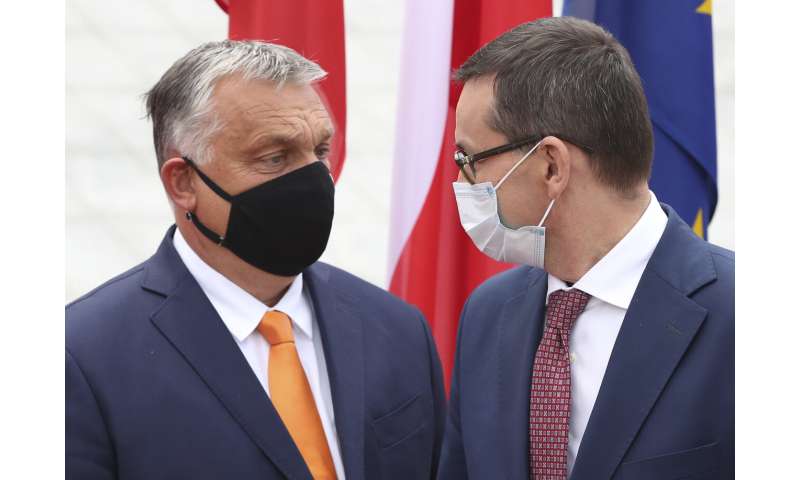
The number of new confirmed coronavirus cases spiked Friday in parts of eastern Europe, with Hungary and the Czech Republic registering all-time daily highs.
Hungarian Prime Minister Viktor Orban said his government was drafting a “war plan” to defend against the second wave of the pandemic. The plan’s aim was “not for everyone to stay at home and bring the country to a halt … but to defend Hungary’s functionality,” Orban said.
The prime minister said measures meant to protect the economy and spur growth would be introduced in the coming weeks. In the second quarter of the year, Hungary’s gross domestic product fell 13.6%, the worst drop in the region.
Orban reiterated the need to protect the elderly, one of the group’s most at-risk during the pandemic, and authorities have banned most visits to retirement homes and hospitals to stem the spread of the virus.
Wearing masks or other face coverings is mandatory on public transportation, in stores and in many public institutions. In Budapest, Hungary’s capital city, people not wearing a mask on public transit or wearing one can be fined 8,000 forints ($26.50).
While Hungary closed its borders to foreigners on Sept. 1, it has since announced several exemptions, including for people arriving from Poland, the Czech Republic and Slovakia, the three other members of Europe’s Visegrad Group, or V4.

“I believe that in the cross-European troubles, we can create a safe Central European island, within which and applying particular rules, movement and the possibility of a common life with the Slovaks, Czechs and Poles can survive,” Orban said.
Hungary reported 718 virus cases on Friday, 142 more than the country’s previous 24-hour record. The Czech Republic reported 1,382 cases, which was over 200 more than its previous daily high and led to the return of face masks being mandatory in enclosed public spaces.
Poland also registered an increase in new confirmed cases, with 594 reported Friday. While that was well below the record 903 cases the country recorded Aug. 21, it was higher than the 400-500 new cases of the previous days.
One possible reason for Poland’s overall decline in reported cases since last month is that the government has implemented a new strategy which focuses primarily on testing symptomatic patients. People quarantined after contact with an infected person, however, will no longer need to be tested.
Montenegro, which in June the first European country to declare itself coronavirus-free, was also registering a spike in new cases, explained by the summer tourist season which saw little distancing at the beaches, restaurants and nightclubs. On Thursday, the small Adriatic state had 128 new cases, with nearly every fifth person tested found to be positive.
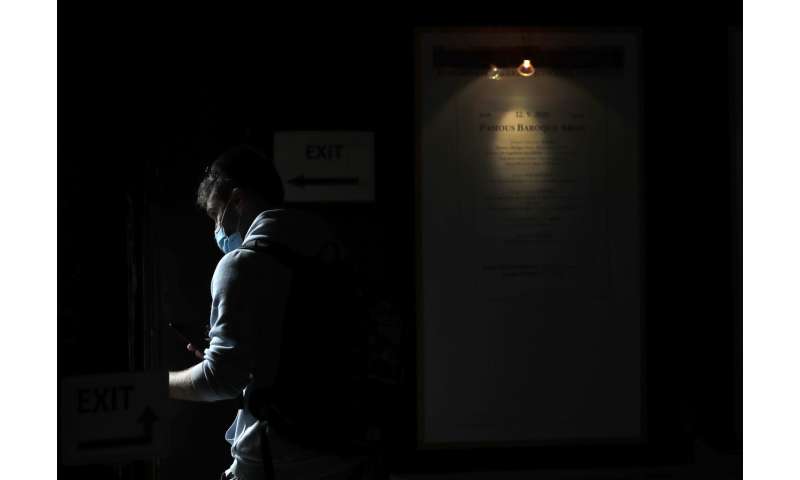
AUSTRIA
In neighboring Austria, the government announced that it would reimpose stricter measures to curb a rise in new infections, particularly in the capital, Vienna.
“Starting Monday face-masks will be mandatory again -– in those areas where they are already mandatory right now like in public transport, supermarkets—but additionally also in shops, services, in government buildings, in schools outside the classroom and in all forms of customer contact,” Chancellor Sebastian Kurz said in Vienna.
“If you want to hear a prognosis, I don’t expect the situation to improve in the coming weeks,” Kurz said. “We can’t promise that other measures won’t become necessary too. The goal is to prevent a lockdown.”
Austria reported 520 new cases on Thursday and 686 on Wednesday, considerably more than daily figures of less than 200 a month ago and a few dozen per day in May and June.
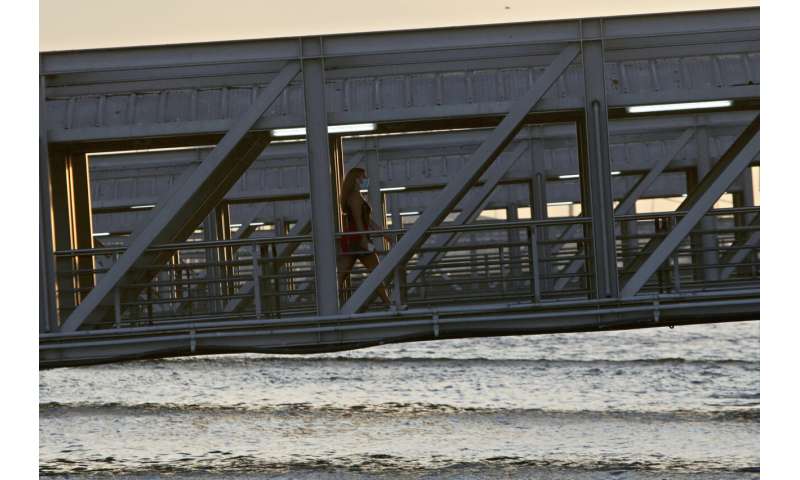
SPAIN
In Spain, the top coronavirus expert saw the country’s rate of new infections easing and “possibly” reaching a plateau after weeks of sharp increases that brought restrictions across the country.
On Friday, Spain’s Health Ministry reported 4,137 new infections in 24 hours, taking the total tally in the pandemic to over 550,000, the highest in Europe. The country’s official death toll reached 26,699 on Thursday.
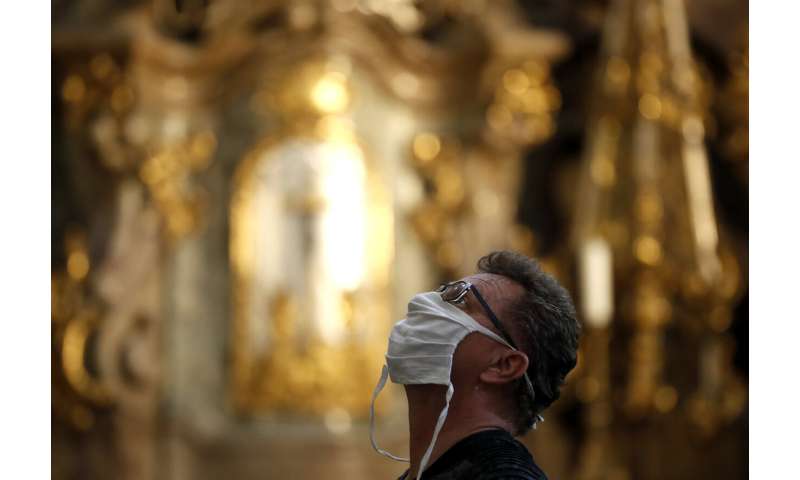
“In recent days, there is a slowdown in this increase and we are possibly seeing a stabilization,” Dr. Fernando Simón, who heads Spain’s health emergency coordination center, said. “We are starting to ease the rhythm (of the increase).”
For his part, Spain’s health minister reacted to President Donald Trump’s comments Thursday at the White House claiming that the United States had “done much, much better than the European Union” regarding the pandemic.
“No one is in a position to give lessons, and with all due respect to the American nation, less so its current president,” Salvador Illa told Spanish public broadcaster TVE on Friday. “You have to be very careful when making international comparisons. Each country has its specificities when it comes to providing the data.”
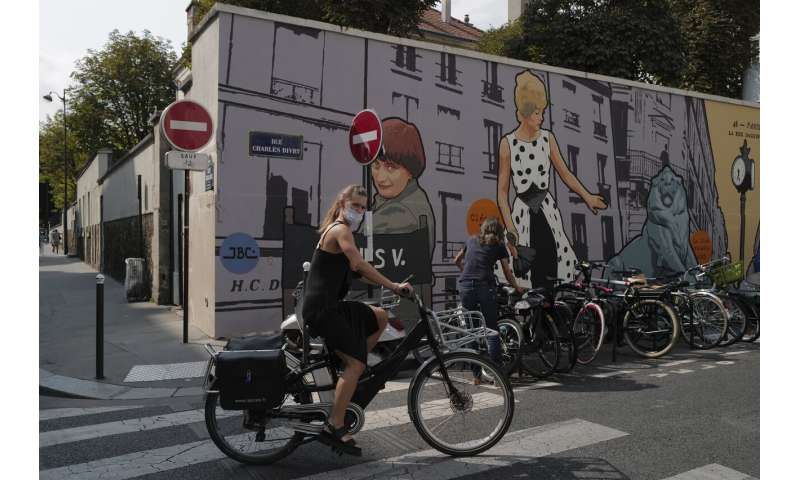
FRANCE
France also reported a large jump in new cases on Thursday, attributed in part to massive testing. The number of people in intensive care with the virus was at its highest level since June, but at 615 people nationwide, was still a fraction of the more than 7,000 ICU virus patients in the spring.
French President Emmanuel Macron promised to unveil new virus restrictions Friday, but warned against “ceding to panic.”
“The virus is circulating widely,” he acknowledged, but added that the new measures would be aimed at allowing the French to “live with the virus”—including keeping children in school.

PORTUGAL
Like Hungary, Portugal has been put back on Britain’s quarantine list, meaning that starting Saturday people traveling from the southern European country’s mainland to Britain must remain quarantined for 14 days after their arrival.
The Portuguese president criticized the rule, saying it punished his country’s tourism-dependent regions.
Source: Read Full Article
